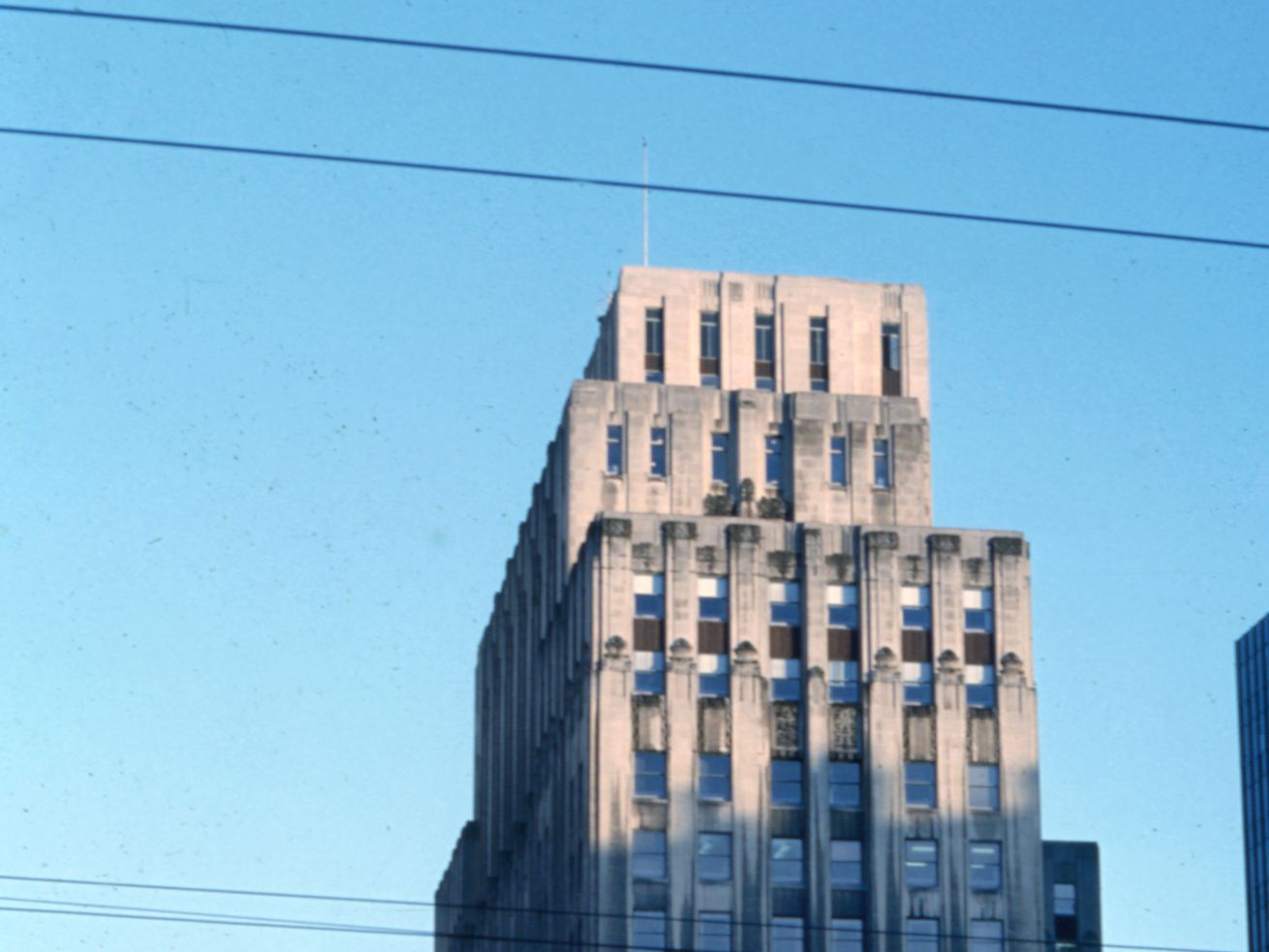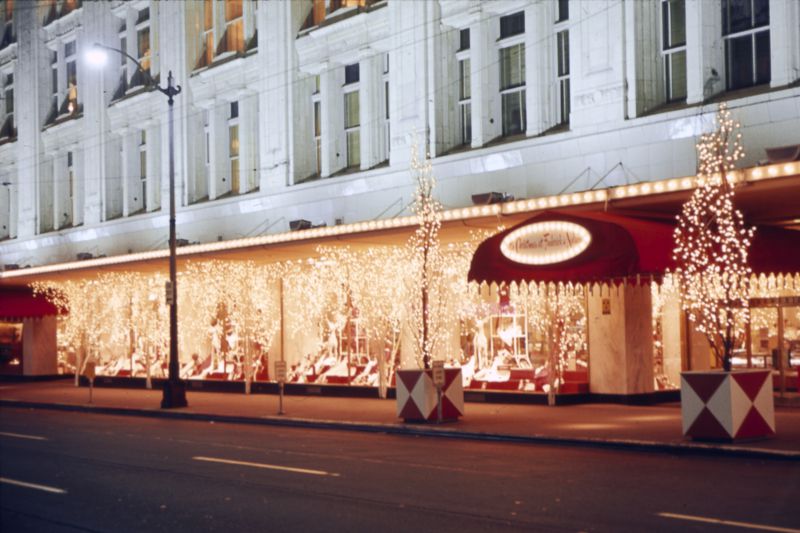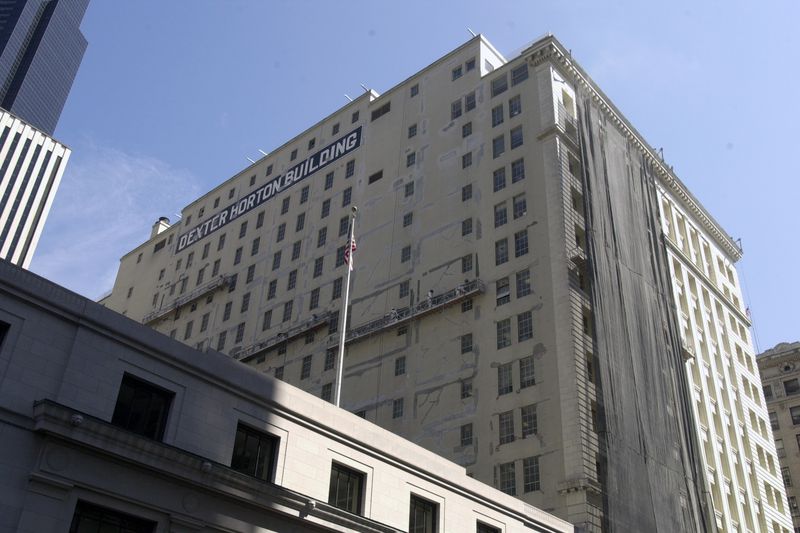
Don’t judge a building by its cover
On March 14, 1927, the Seattle Bond and Stock Exchange opened as a free market to the Pacific Northwest, the first of its kind in the area. The original incarnation operated out of the Chamber of Commerce Building at 215 Columbia Street, in the Merchants’ Exchange rooms on the ground floor.
After a busy opening day—a list of securities approved included local businesses Carnation Milk Products Company, Sherman & Clay Pianos, the Olympic Hotel (known today as the Fairmont Olympic), and the Medical and Dental Building—the Seattle Stock Exchange grew quickly. Plans were put in place to build it its own, much larger home, just a few blocks north at Second Avenue and Marion Street.
Designed by John Graham and Associates in 1929, the Exchange Building was kicked off just in time for the U.S. stock market to crash. It was an enormous project: When construction was finished in May of 1930, the 23-story, 278-foot, L-shaped Art Deco tower was the second-tallest reinforced-concrete structure in the United States and was able to hold more stock and mercantile exchanges than any other building in the nation. Thanks to the ensuing national Great Depression that followed the Wall Street Crash, the Exchange Building turned out to be the last major construction in downtown Seattle for nearly 20 years.
John Graham, Sr., was 27 when he immigrated to the U.S. from Liverpool, after apprenticing as an architect in England. He started his own architectural practice upon landing in Seattle in 1900, working on small residential projects at first and landing a major gig in 1902: the reconstruction of First Hill’s Trinity Parish Church after a fire swept through, leaving only the exterior stone walls.
After partnering with a couple of other architects between 1904 and 1910, Graham struck out on his own, designing the Joshua Green Building in 1913 at Fourth and Pike, the Frederick & Nelson (now Nordstrom) store in 1916, the Dexter Horton Building in 1921, and the flagship Bon Marché building in 1928. Architect William L. Painter joined the firm in 1936, and Graham’s son, John Graham, Jr., followed suit in 1937; the company went on to develop dozens of buildings in and outside of Seattle, the most prominent of which was the Space Needle. In the prewar era, Graham buildings were characterized by terra cotta ornaments, classical elements, and Art Deco style.

Courtesy of the Seattle Municipal Archives, item No. 177120

Courtesy of the Seattle Municipal Archives, item No. 131555
The Exchange Building was no exception. The interior was built to impress, with elegant dark marble stonework and bronze details throughout the lobby. All of the doors in the elevator bank are flanked with highly stylized cast bronze grilles, typical of the modernistic Art Deco period. On the building’s exterior, dark, polished Morton gneiss—mined in Morton, Minnesota, where it’s also known locally as rainbow granite for its swirls of pink—on the base of the building sets off the lighter stone above it. (Morton gneiss is found here and there throughout downtown Seattle—the Rainier Club from 1905 is another example where you can spot it. Local geologist David B. Williams calls it “the oldest stone you’ll ever see,” at 3.5 billion years old.)
Above grade, the rest of the building is faced in ochre Romanite, a cast concrete that aims to look like sandstone. Throughout the building, stylistic motifs pertained to the Pacific Northwest are found: grapevines, flowers, wheat, fruit trees. The carved details on the façade as well as the interior ornaments describe classic Art Deco themes, meanwhile: ferns, baskets of flowers, chevrons, spirals, and other geometric designs. Inside, two sets of stained-glass, fan-shaped lights illuminate the dark, dramatic lobby, while its spectacular ceiling is gold leaf with turquoise and rose spirals and florals, bordered by bands containing more chevrons and more flowers.
When the Exchange Building was opened for business in 1930, the Merchant’s Exchange occupied the first four floors—trading took place on the second and fourth floors, with double-height ceilings and balconies for spectating. The main trading area, known as “the pit,” was found on the second floor and was a busy scene, with men rushing around buying and selling, while the crowds watched the show from above. No longer there today but present on the trading floor at the building’s debut was an ornate marble drinking fountain, a photograph of which can be seen in a display of historic photos in the lobby. Both lobbies have original, super-ornamented bronze letter boxes and carved wooden phone booths.
In the wake of the stock market crash, business at smaller stock exchanges were devastated. The Seattle Stock Exchange merged with Seattle Curb and Mining Exchange, whose offices were also in the building, just a few years later in 1935, out of necessity. Although the whole operation limped through the Depression successfully, the Seattle Stock Exchange never recovered and ceased operations for good on October 1st, 1942, and the building was converted to commercial offices. In 1953, Pacific Northwest Bell moved into many of the upper floors, and they technically conducted exchanges, so the name stuck around. After PNB left in 1977, Metro took over 85 percent of the building through its merger with King County, and stuck around until 1999.
Today, the Exchange Building has nothing much to do with exchanging anything and serves as just an ordinary office building—albeit a pretty magnificent one, as office buildings go. It received landmark status from the Seattle Landmark Preservation Board on April 20, 1990 and received the “Building of the Year” award in 2002 from Building Owners and Managers Association International. It was bought for $66 million in 2013 by Boston-based Beacon Capital Partners, a company that specializes in restoring historic properties from the 1920s and 1930s, and indeed, they significantly restored, improved, and transformed both the interior and exterior—and also found some more tenants to help fill the third of the building that was empty at the time. Their efforts paid off: In 2017, Beacon sold the property to New York City’s The Blackstone Group, which also owns the Columbia Tower, for $156.5 million, more than double what Beacon paid for it. Current tenants include Deloitte, Slalom, and Nuance.
Despite its illustrious awards, the Exchange Building is kind of easy to miss; you’ve definitely walked right past it a zillion times. But the next time you’re in the area, it’s worth ducking inside the lobby for a minute to reflect on all the dazzling, perfectly Art Deco details that are hiding inside. It’s a surprising work of art—especially considering it was built for a business without the most artistic reputation.


